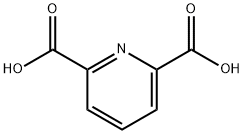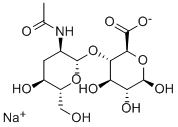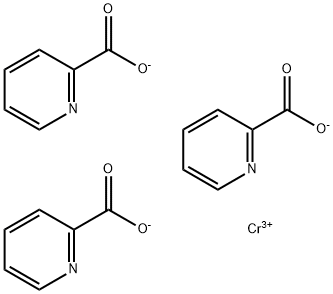2,6-Pyridinedicarboxylic acid , 99% , 499-83-2
Synonym(s):
DPA;Dipicolinic acid;Pyridine-2,6-dicarboxylic acid;DPAc;Dipicolinic acid solution
CAS NO.:499-83-2
Empirical Formula: C7H5NO4
Molecular Weight: 167.12
MDL number: MFCD00006299
EINECS: 207-894-3
| Pack Size | Price | Stock | Quantity |
| 5g | RMB25.60 | In Stock |
|
| 25G | RMB52.00 | In Stock |
|
| 100G | RMB150.40 | In Stock |
|
| 500G | RMB720.80 | In Stock |
|
| others | Enquire |
PRODUCT Properties
| Melting point: | 248-250 °C (dec.)(lit.) |
| Boiling point: | 295.67°C (rough estimate) |
| Density | 1.5216 (rough estimate) |
| bulk density | 700kg/m3 |
| vapor pressure | <0.01 hPa (20 °C) |
| refractive index | 1.6280 (estimate) |
| Flash point: | 188 °C |
| storage temp. | Store below +30°C. |
| solubility | H2O: 1%, clear |
| form | Crystalline Powder |
| pka | 2.16(at 25℃) |
| color | White |
| PH | 2.0 (5g/l, H2O, 20℃) |
| Water Solubility | 5 g/L (20 ºC) |
| BRN | 131629 |
| InChIKey | WJJMNDUMQPNECX-UHFFFAOYSA-N |
| LogP | 0.3 at 25℃ and pH1.8 |
| CAS DataBase Reference | 499-83-2(CAS DataBase Reference) |
| NIST Chemistry Reference | 2,6-Pyridinedicarboxylic acid(499-83-2) |
| EPA Substance Registry System | 2,6-Pyridinedicarboxylic acid (499-83-2) |
Description and Uses
2,6-Pyridinedicarboxylic acid (PDCA) contains two carboxylic groups on each side of the pyridine ring. Both groups form rigid 120° angles with the pyridine. Carboxylic functionality could be complex and bind with metals under certain conditions. Numerous metal?organic frameworks, metal complexes, drugs, and CPs based on PDCA were developed for applications related to gas storage, separation, catalysis, magnetism, and sensing[1]. Shao et al. researched the solubility of PDCA in methanol, ethanol, n-propanol, isopropanol, THF, 1,4-dioxane, acetic acid, formic acid, acetonitrile, ethyl acetate, and toluene. They found that PDCA solubility was the highest in methanol but the lowest in acetonitrile.
Pyridine-2,6-dicarboxylic acid is used in the preparation of dipicolinato ligated lanthanide and transition metal complexes. It acts as a chelating agent for chromium, zinc, manganese, copper, iron and molybdenum. Its calcium-dipcolinic acid complex is used to protect deoxyribonucleic acid (DNA) from heat denaturation which enhances the DNA stability. It plays an important role as a marker for the effectiveness of sterilization.
Safety
| Symbol(GHS) |  GHS07 |
| Signal word | Warning |
| Hazard statements | H315-H319-H335 |
| Precautionary statements | P302+P352-P305+P351+P338 |
| Hazard Codes | Xi |
| Risk Statements | 36/37/38-37/38-36 |
| Safety Statements | 26-36-24/25-37 |
| WGK Germany | 3 |
| Autoignition Temperature | 620 °C |
| TSCA | T |
| HazardClass | IRRITANT |
| HS Code | 29333999 |
| Toxicity | LD50 orally in Rabbit: 10500 mg/kg |




